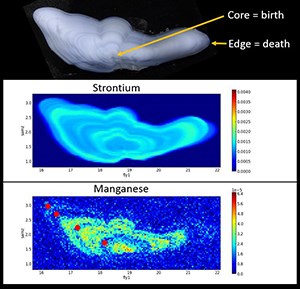Contact
Yvette Heimbrand, Doctoral Student
Department of Aquatic Resources, Institute of Coastal Research, SLU
yvette.heimbrand@slu.se, +46 10 478 41 26

The fish management of the Baltic Sea cod requires better analysis of age and growth in order to estimate the stock size and decide on the levels of fishing quotas. Yvette Heimbrand, PhD student at SLU, the Department of Aquatic Resources, analyzes trace elements in the cod's ear stones (otoliths), and tests a new method for age determination of fish.
Yvette Heimbrand use the otoliths as time recorders in her research. The otoliths are small, calcified structures in the hearing and balance system that incorporate material during the fish's life, reflecting the environment and metabolism.
The age of fish is usually analyzed by counting the annual rings shown in the otolith, but the annual rings of the Baltic Sea cod are difficult to interpret. Today, no analytical assessment for the Eastern Baltic cod stock is available for fisheries management due to unreliable age and growth data.
With microchemical techniques Yvette Heimbrand investigates seasonal patterns of trace elements in the otolith that can validate age and growth and provide information to improve fisheries management.
Yvette Heimbrand, Doctoral Student
Department of Aquatic Resources, Institute of Coastal Research, SLU
yvette.heimbrand@slu.se, +46 10 478 41 26